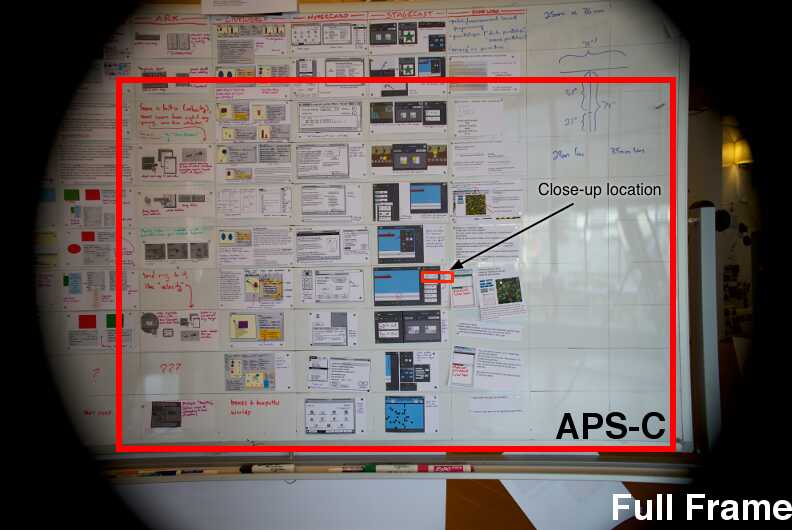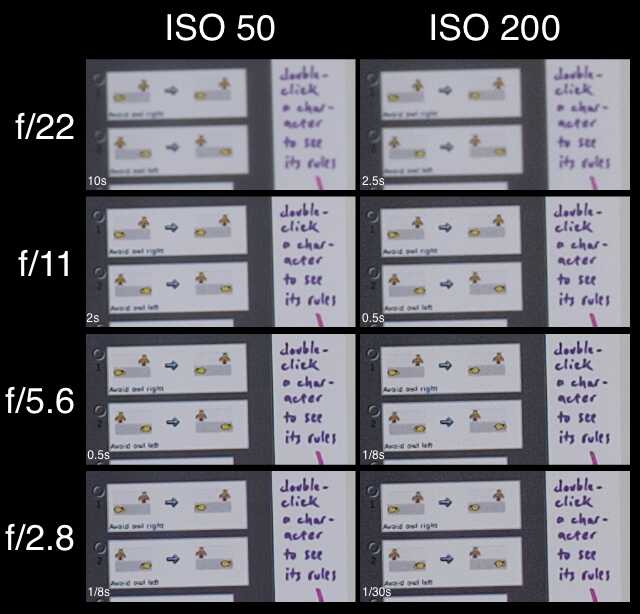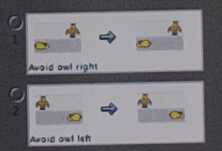Spurred by my excitement about Toby's whiteboard-archiving ideas ("Dynamic whiteboard archiving", 2016-03-13), I figured I'd send a report on where we are with whiteboard photography, technically speaking.
Last week we bought some gear:
* Sony Alpha a7R II (Amazon)
* Sony Carl Zeiss Sonnar T* E 24mm (Amazon)
Shortly after said gear arrived, Paula discovered that I had made a mistake in my lens selection. The camera we bought has a full-frame sensor (36 × 24mm), which gives it room to squeeze in all 42 of its magnificent megapixels. But the lens we bought was designed to support at most an APS-C sensor (25.1 × 16.7mm). The corners of our full-frame sensor are unable to see anything through this lens. The camera will helpfully detect this and automatically crop the image to a smaller field of view, but that means we are missing out on the megapixels we spent all this money on.

Fortunately, there are full-frame analogues of this lens available for purchase. I would recommend this one, just because it’s the same as the one we already bought, except it's full-frame and 35mm rather than 24mm. (I don't think focal length matters much, except that wider-angle lenses make the camera easier to position.)
But we can already use the lens we have to perform a probably-mostly-valid test of what kind of quality we will be able to get with that lens. [How? Frame the whiteboard with APS-C crop mode on, then move the camera ~31% closer, corresponding to the increased resolution we will get with a full-frame lens.]
Overall quality
Here’s the spot marked “close-up location” in the picture above, shot under various conditions (all emulating the full-frame lens situation):

Judging time: Can you make out the text under the pictures? You can in real life! Here’s a shot with the camera a little closer:

So if our standard is that our reproduction system should be able to capture the quality of every picture we print out and put on our boards, then we’re not there yet. But:
A: I deliberately picked a small, challenging feature for this test. A more holistic appraisal would be for you to download and skim around the whole image. (That’s the ISO 50 f/2.8 shot. Please don’t be confused by the whiteboard being off-center.)
B: Following Toby's line of thought, a camera only really needs to be able to pick up the rough arrangement of printed images, together with printed text and handwritten text & drawings. We can plug in high-quality versions of all the printed images.
Stitching
Conclusion
I like this camera a lot. Even if it doesn't work on Bret's tiny-text object-systems whiteboard in a "one shot and you're done" mode, it can play a key role in helping us make Toby-style dynamic whiteboard archives or high-quality stitched reproductions.
So I think we had better get that lens I mentioned. After someone double-checks me on that. 😀
Fun but less important technical thoughts:
RAW vs JPEG – compression artifacts
All the images above are from RAW captures, processed by Mac’s Preview application. Comparing this with the camera’s JPEG output suggests that compression could be a problem. For example:
RAW: 
JPEG: 
The high contrast of text seems to create “ringing” artifacts which look noisy to me.
RAW vs JPEG – chromatic aberration
However, whatever the camera is doing to process the JPEG from the RAW includes some other useful bits. For instance, bits of the image near the edge of the lens have dramatic chromatic aberration which the processing does a good job of cleaning up:

But the chromatic aberration here is unrealistically strong, since I went all the way to the edge of the lens to find it, and this is the part of the lens which we won’t find in-frame once we get a full-frame lens. Just something else to consider.
Lens distortion
I haven’t taken a look at lens distortion yet. It’s likely we will get a significant amount, since we are squeezing our whiteboards into the frame edge-to-edge. Fortunately, this kind of distortion is predictable and correcting it is easy. Just something else to consider.